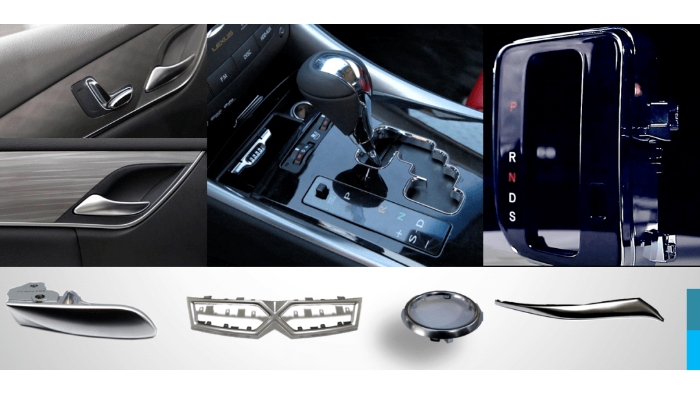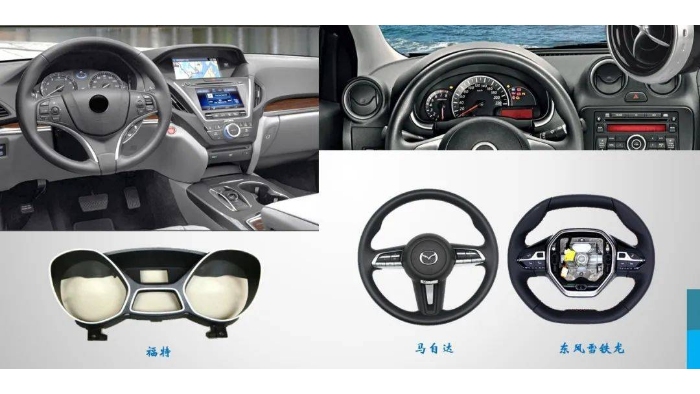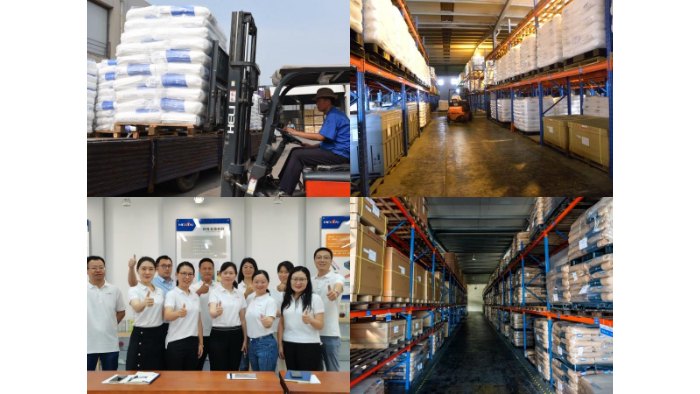Plastic is a polymer material mainly composed of organic synthetic resin, which can be molded under heating and pressure conditions. Because of its excellent properties such as light weight, low cost, easy processing, and various surface treatments, it is widely used in automotive interior parts, exterior parts, structural parts, and functional parts. With the continuous development of automobile lightweight technology, the use of plastics in automobiles has increased sharply.
Among automotive plastics, general-purpose plastics are relatively low-priced and their usage proportion exceeds 50%, followed by engineering plastics, which account for about 15%. Specialty plastics are more expensive and their usage is relatively small. According to research statistics, the automotive plastic varieties that are at the forefront and are suitable for electroplating include ABS, PP, PA, PC, etc.

Application of ABS in automobiles
ABS is a thermoplastic engineering plastic with a wide range of uses. Because ABS plastic has deficiencies such as poor weather resistance, discoloration, and flammability, it is often mixed with other polymers when used in automobiles to prepare more abundant modified products, such as: ABS/PC, ABS/PA, ABS/PVC Plastic alloys, etc.
ABS/PC alloy can improve the heat resistance and tensile strength of ABS, reduce PC melt viscosity, improve processing performance, and reduce the sensitivity of product internal stress and impact strength to product thickness. It is mainly used in automobile interior and exterior applications. Decoration, car lights and other parts with high strength and high heat resistance;
ABS/PA alloy has warpage resistance, good fluidity, and unique matte properties, and can be used in bumpers, instrument panels, pillar decorative panels and other parts;
ABS/PVC alloy not only has heat resistance and impact resistance, but also has flame retardant, self-extinguishing properties and chemical resistance. It is mainly used in automobile dashboards, instrument panel skins and other parts that require flame retardancy.
Electroplating grade ABS plastic requires good bonding between the metal coating and the substrate, and the butadiene content should be controlled at 18% to 23%. The ABS plastic electroplating process includes three stages: pretreatment, electroless plating and electroplating. The general main process flow is stress relief → oil removal → roughening → hexavalent chromium reduction → palladium tin activation → tin hydroxide removal → electroless nickel plating ( or copper) → pre-plating → electroplating, among which surface treatment before plating is the most critical. Surface pretreatment, process simplification, and environmentally friendly plating solution substitution have always been hot topics in research.

Application of PP in automobiles
PP is an odorless, non-toxic, colorless and translucent thermoplastic lightweight general-purpose plastic with good chemical resistance, heat resistance, electrical insulation and high-strength mechanical properties. Adding reinforcing agents, toughening agents, etc. to the raw materials can change the polymer components and macromolecular structure or crystal configuration of polypropylene to improve its overall performance.
If a certain proportion of glass fiber is added to PP, a glass fiber-reinforced PP with higher rigidity and heat resistance can be obtained. It is often used in automobile structural parts and parts with high operating temperatures, such as the intake pipe of the engine compartment and the air filter. Cleaner shells, radiator fans, etc.; adding an appropriate amount of talc powder and calcium carbonate to PP can also improve the stiffness and heat resistance of PP. This modified PP is often used in automobile bumper frames, instrument panels, and deflectors. , columns, etc.; adding toughening agents such as POE or ethylene propylene diene monomer (EPDM) to PP can be used for some structural parts with high toughness requirements in high-end automobiles.
From the perspective of electroplating process, PP can be divided into ordinary type, electroplating type and conductive type.
Ordinary PP electroplating has poor dimensional accuracy and troublesome roughening. It must be swollen with an organic solvent before etching and roughening. The commonly used organic solvent is xylene. After roughening, it can be processed according to the sensitization, activation and other processes and procedures of ABS plastic;
Electroplating grade PP is made by adding a certain proportion of fillers such as ZnO and TiO2 to polypropylene plastic. These fillers can be dissolved during the chemical etching and roughening process to form a rough surface to improve the bonding strength of the coating. For electroplated PP, it can also be carried out according to the electroplating process of ABS plastic, except that the solution temperature needs to be increased to 70~80℃ during chemical etching;
Conductive PP is obtained by adding graphite powder with a mass fraction of about 30% to polypropylene. It has good electrical conductivity and can be electroplated according to the metal parts process. The development of electroplating-grade PP and the improvement of roughening processes have always been hot topics in PP electroplating process research.
Application of PA in automobiles
PA plastic has good mechanical properties, heat resistance, wear resistance, chemical resistance and self-lubrication, low friction coefficient, certain flame retardancy, easy processing, and is suitable for filling with glass fiber and other fillers Enhance modification.
Glass fiber reinforced PA can be used for plastic parts and engine parts in the engine compartment; high heat-resistant PA/ABS alloys are used in automobile rearview mirrors, fuel tank caps, fenders, etc.; PA/PPE alloys have excellent heat resistance, With properties such as strength, flame retardancy, and conductivity, it can be used in automobile central electrical boxes, fenders, large baffles, guard panels, etc.
The stress of ordinary PA workpieces should be checked before electroplating. The method is to immerse the workpiece in n-heptane. If cracks appear within 5 to 15 seconds, the stress needs to be removed. Stressed workpieces can be placed in cold water and heated to boiling. Keep it for 3 hours and then slowly cool it with water to eliminate internal stress. The pretreatment process before PA electroplating is roughly the same as that of ABS plastic, except for the roughening process. The development of electroplating materials, environmental protection and process improvement are still hot topics in research.

Application of PC in automobiles
PC is a high molecular polymer containing carbonate groups in the molecular chain. It has the characteristics of high impact strength, good fatigue resistance, good dimensional stability, transparency and good free dyeability. However, due to its poor scratch resistance and wear resistance, it is often used in the form of plastic alloys for automobile interior and exterior decoration. For example, PC/PET and PC/PBT alloys have the high heat resistance and impact resistance of PC and the wear resistance and processing properties of polyester. They are suitable for making automobile body components, side guards, automobile door frames and low-temperature impact properties. High bumpers.
The PC pretreatment process includes internal stress inspection, stress relief, swelling treatment, and chemical etching roughening. The stress inspection is to immerse the workpiece in an aqueous solution with a mass fraction of 70% acetone and leave it at room temperature for 1 minute to observe whether cracks appear. The stress relief method is to slowly raise the temperature to 110~130℃ in an oven, keep it warm for 2~6 hours and then cool slowly; for swelling, the workpiece is immersed in solvents such as methanol, ethanol, phenol and ether until the surface turns slightly white; Chemical etching roughening can use ABS high sulfuric acid chemical roughening solution, but the temperature should be higher. It can also be carried out in roughening liquids such as sodium hydroxide, sodium nitrate, and sodium nitrite. The preparation of alloy materials and the improvement of surface pretreatment processes are hot topics in PC electroplating research.
If you want to know more about electroplating grade plastic raw materials, please contact Meifeng Trading.
QINGDAO PRIME TRADE CO., LTD is a company with more than 21 years of experience that specializes in distributing international brand engineering plastic particles. It mainly represents: CHIMEI ABS, HANWHA TOTAL PP, SABIC PPO, PC special materials, and BASF PBT. We also have our own modification processing factory,
QINGDAO PRIME TRADE CO., LTD is a company with more than 21 years of experience that specializes in distributing international brand engineering plastic particles. It mainly represents: CHIMEI ABS, HANWHA TOTAL PP, SABIC PPO, PC special materials, and BASF PBT. We also have our own modification processing factory, Qingdao primetech Plastic Co., Ltd., with a professional technical team to provide you with fast and professional services to meet the needs of customers at different levels.


 English
English
















